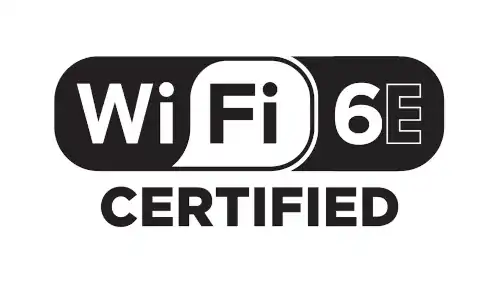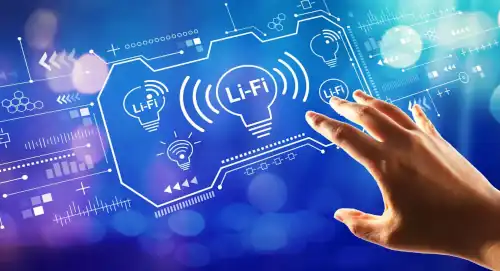In the dawn of the digital age, a revolutionary technology emerged, altering the very fabric of human communication and connectivity – the Wireless Fidelity, or as we fondly know it, Wi-Fi. An integral part of our daily lives, Wi-Fi has rapidly evolved from being a luxury to a quintessential necessity, driving the wheel of the digital era and shaping our connectivity landscape.
Wi-Fi has become our invisible companion, linking our devices to the vast realm of the internet. It has not only transformed the way we interact with the world but has also catalyzed the metamorphosis of numerous industries. From streaming our favorite movies, managing our smart homes, to facilitating business operations, and even steering critical healthcare services, Wi-Fi forms the backbone of our modern, hyper-connected society.
Without the bounds of wires, we have been given the freedom to roam, to explore, to connect, and to communicate. We shop, learn, work, play, and stay in touch with loved ones, all thanks to this wireless wonder. The omnipresence of Wi-Fi signals in our environment often makes us forget the technological marvel that it truly is.

The impact of Wi-Fi on our lives is profound and far-reaching. Its evolution from a simple wireless standard to the robust, high-speed networks we know today is a remarkable journey, filled with innovation and adaptation.
As we delve into the evolution of Wi-Fi technology and its impact on modern networks, we invite you to join us on this fascinating journey. It’s a story of continuous growth and advancement, shaping our lives in ways we often take for granted. Here’s to Wi-Fi, the unsung hero powering our digital lives.
In this article:
- The Evolution of Wi-Fi Technology
- The Impact of Wi-Fi on Modern Networks
- The Future of Wi-Fi
- Conclusion
The Evolution of Wi-Fi Technology
Wi-Fi’s transformative journey begins in the 1990s, with the formation of the IEEE 802.11 working group, aiming to create a wireless networking standard that would remove the shackles of cables and bring forth a new era of connectivity. Little did they know, they were writing the first chapter of a technological epic that would influence billions of lives.
802.11 protocol
The original 802.11 protocol, introduced in 1997, marked the inception of Wi-Fi. It allowed data transfer at 2Mbps in the 2.4GHz band, a modest beginning for a technology that would soon revolutionize our world.
Wi-Fi technology then leaped forward with the introduction of 802.11a and 802.11b in 1999. The former operated in the less crowded 5GHz band and offered speeds up to 54Mbps, while the latter stayed in the 2.4GHz band, reaching 11Mbps. The balance of speed and compatibility these standards offered paved the way for Wi-Fi’s widespread adoption.
The world got its first taste of high-speed Wi-Fi with 802.11g in 2003. Operating in the 2.4GHz band, it matched the speed of 802.11a, ensuring faster connections without sacrificing compatibility. This was followed by 802.11n or Wi-Fi 4, which ushered in the era of Multiple-Input, Multiple-Output (MIMO) technology, allowing simultaneous data streams and effectively doubling the speed.
Wi-Fi 5 (802.11ac)
Wi-Fi’s evolution continued at a breakneck pace with Wi-Fi 5 (802.11ac). Launched in 2013, it exclusively utilized the 5GHz band and introduced innovations like beamforming and multi-user MIMO (MU-MIMO), pushing theoretical speeds beyond 1Gbps for the first time.
Wi-Fi 6 (802.11ax)
More recently, Wi-Fi 6 (802.11ax) has brought us into the era of high-efficiency wireless. With advancements like Orthogonal Frequency Division Multiple Access (OFDMA), improved MU-MIMO, and higher QAM, Wi-Fi 6 offers faster speeds, higher capacity, and better performance in congested areas, responding to the modern demands of a data-hungry society.
Wi-Fi 7 (802.11be)
On the horizon is Wi-Fi 7 (802.11be), expected to bring forward a new generation of wireless communication, with anticipated improvements such as enhanced spectral efficiency, higher throughput, and even lower latency.
The evolution of Wi-Fi is a testament to the relentless pursuit of faster, more efficient wireless communication. Each generation has brought us one step closer to an always-connected, high-speed world. As we look back at this journey, we marvel at how far we have come and look forward to the leaps yet to be made.
The Impact of Wi-Fi on Modern Networks
As we continue our exploration of the Wi-Fi phenomenon, it becomes abundantly clear that the influence of Wi-Fi on modern networks extends far beyond our laptops and smartphones. It has become a ubiquitous presence, quietly powering the invisible threads that weave our digital world together.
Internet of Things (IoT)
The Internet of Things (IoT), a concept that seemed almost fantastical a decade ago, has now become a reality, largely thanks to Wi-Fi. From smart refrigerators and connected thermostats to wearable devices and city infrastructure, Wi-Fi enables these smart devices to communicate, creating a seamless network that’s reshaping how we interact with our surroundings.
Smart Homes
At the heart of our smart homes, Wi-Fi stands as the conductor of a wireless symphony. It orchestrates the interplay between myriad devices, enabling a level of automation and convenience that was once the stuff of science fiction. Moreover, with the advent of Wi-Fi mesh systems, we’ve conquered the age-old problem of ‘dead zones’, ensuring uniform connectivity across our homes, no matter the size or layout.
Wi-Fi in businesses: office connectivity
Beyond our homes, Wi-Fi has significantly transformed our workplaces. It enables office connectivity, supporting collaborative tools, and cloud-based applications essential in our modern work environment. Concepts like hot-desking and co-working spaces are viable because of the flexibility Wi-Fi provides, breaking down physical barriers and creating dynamic, fluid workplaces.

Public Wi-Fi networks
The influence of Wi-Fi also extends to public networks, such as those in cafes, airports, and hotels. City-wide Wi-Fi networks, while still a work in progress, have the potential to democratize internet access and spur smart city initiatives, offering promise for a more connected future.
Offloading cellular data
Further blurring the lines between wired and wireless, Wi-Fi and mobile networks have developed a symbiotic relationship. Wi-Fi helps offload cellular data, easing the pressure on mobile networks, while providing users with seamless connectivity. It’s no exaggeration to say that Wi-Fi has been instrumental in the mobile revolution we see today.
The imprint of Wi-Fi on modern networks is profound and far-reaching. It has undeniably become an essential cog in the machinery of our digital existence, supporting a myriad of applications and services we rely on daily. As we gaze upon this tapestry of wireless communication, it’s clear that Wi-Fi has not just adapted to our needs, but has also anticipated and shaped them. In essence, Wi-Fi isn’t just about connectivity; it’s about possibility, about envisioning and enabling a world without wires.
The Future of Wi-Fi
As we journey into the future of Wi-Fi, we step into an exciting landscape filled with potential. Even as we marvel at the capabilities of our current technology, we find ourselves on the brink of new frontiers that promise to stretch the boundaries of wireless communication even further.
Wi-Fi 6E and the 6GHz band
First on the horizon is Wi-Fi 6E, a recent extension to Wi-Fi 6, set to usher in a new era of wireless connectivity with the inclusion of the 6GHz band. This expansion not only provides more room for Wi-Fi networks, reducing congestion, but it also paves the way for faster speeds, lower latency, and a more reliable connection, solidifying Wi-Fi’s role as the linchpin of modern networking.

Anticipated trends: More IoT integration, role in smart cities
A major trend anticipated in the future of Wi-Fi is its increasing integration with IoT. With billions of new devices expected to come online in the next decade, Wi-Fi will continue to adapt and evolve, meeting the challenge of connecting an ever-growing digital universe.
On the larger canvas of city infrastructure, Wi-Fi will play a pivotal role in the development of smart cities. Imagine traffic lights that communicate with cars, waste bins that notify when they’re full, and public utilities that self-report issues — this interconnected cityscape is no longer a distant dream but an emerging reality, with Wi-Fi at its core.
Wi-Fi 7 and beyond: Potential enhancements and capabilities
Beyond Wi-Fi 6E, the prospect of Wi-Fi 7 (802.11be) is already stirring excitement. Although still in the development stage, Wi-Fi 7 is expected to bring enhanced spectral efficiency, multi-band operation, and higher throughput, setting the stage for even more powerful wireless networks. It holds the promise of further reducing latency, a feature that could revolutionize applications such as virtual reality, online gaming, and real-time video communication.
Impact of advancing Wi-Fi technology on the evolution of other wireless technologies
The ongoing advancements in Wi-Fi technology will continue to shape the evolution of other wireless technologies. From mobile networks and Bluetooth to emerging tech like Li-Fi, the progress of Wi-Fi sets the pace and pushes the envelope for the entire field.

As we stand on the cusp of this new era of Wi-Fi, it’s evident that our journey is far from over. Instead, it feels as though we’re just getting started. The future of Wi-Fi shines bright, filled with potential and unexplored possibilities. As this invisible force continues to shape our world, one thing is certain: The future is wireless, and Wi-Fi is leading the way.
Conclusion
As we conclude our exploration into the remarkable world of Wi-Fi, it’s evident that this wireless wonder has not just connected our devices, but it has also bridged gaps between people, between cities, and between nations. Wi-Fi has become a common thread that runs through the fabric of our modern society, holding together a globally connected tapestry of ideas, knowledge, and culture.
From its humble beginnings with the 802.11 protocol to the impending arrival of Wi-Fi 7, Wi-Fi technology has never ceased to evolve. Each leap has been accompanied by a quantum jump in our ability to communicate, to share, and to build. It has transformed our homes, our workplaces, and our cities, empowering them with the promise of seamless connectivity.
Impact of Wi-Fi
The impact of Wi-Fi is evident not just in the proliferation of connected devices, but also in the rise of smart homes, the growth of IoT, the flexibility of modern workspaces, and the potential of smart cities. It has paved the way for a new digital era where access to information is not just universal but is also instant and unbound by physical limits.
As we cast our eyes to the future, we see a world where Wi-Fi continues to lead the charge towards an increasingly interconnected world. With the advent of Wi-Fi 6E and beyond, we’re set to witness a further revolution in speed, capacity, and efficiency. The role Wi-Fi will play in shaping emerging technologies and defining the next phase of our digital evolution seems assured.
In the end, the story of Wi-Fi is a story of human innovation and the desire to connect. As we advance into a future shaped by digital transformation, Wi-Fi, the invisible lifeline of our connected world, will undoubtedly continue to be a driving force. We stand on the precipice of new possibilities, and one can’t help but feel a sense of anticipation for what’s to come. The journey of Wi-Fi is a testament to the power of connectivity, and in many ways, it’s a journey that’s just beginning.